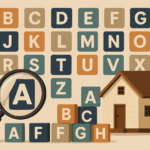Every property investment carries its share of risks, but few are as potentially devastating as unnoticed structural problems.
These hidden foes can lurk in the bones of even the most promising properties, silently chipping away at your investment's worth and safety.
So let’s look at the top 10 structural concerns that every savvy investor needs to understand.
1. Cracks in Walls or Foundations
Signs: Watch for cracks wider than a pencil, particularly diagonal ones around door and window corners, which suggest significant shifting or settling.
Action: A structural engineer can determine the severity and cause. Repairs might involve underpinning the foundation, using piers or mudjacking to raise and stabilize the foundation soil.

2. Uneven or Sloping Floors
Signs: Floors that slope more than usual can indicate foundational shifts or damaged support beams.
Action: Hire a building inspector or structural engineer to assess the underpinning causes. Solutions could include leveling the foundation, reinforcing floor joists, or entirely replacing damaged supports.
3. Gaps Around Window and Door Frames
Signs: Misaligned doors and windows, noticeable gaps, or difficulty opening and closing can indicate the structure has shifted.
Action: Realign or replace the affected frames to secure the envelope of the house. Additional foundation assessment may be needed to address underlying shifting.

4. Sagging Roof or Leaning Walls
Signs: A roof that dips or walls that appear to bulge out or cave in are immediate danger signs.
Action: Consult with a structural engineer for an urgent safety assessment. Repairs may involve replacing the roof structure or installing buttresses or ties for walls.
5. Dampness and Water Damage
Signs: Persistent damp spots, flaking paint, water stains, mold growth, or a musty odor are all indicators of moisture issues.
Action: Address the cause of dampness by improving external drainage, repairing leaks, and possibly installing a sump pump or additional waterproofing measures in basements or crawl spaces.
6. Termite Damage
Signs: Look for hollowed-out wood, mud tubes on exterior walls, and frass (termite droppings) in or around the property.
Action: A professional pest control service should treat the area with termiticide and possibly fumigate, followed by repairs to any structural timbers or replacement of severely damaged wood.
7. Bouncy or Creaky Floors
Signs: Floors that feel unstable or noisy when walked upon could be due to weakened joists or subfloor deterioration.
Action: A thorough evaluation by a contractor to determine if additional support is needed underfoot or if parts of the subfloor need replacing to restore stability and quietness.
8. Corrosion of Structural Steel
Signs: Rusting steel, expansion joints showing gaps, or visible flaking and brittleness in metal components.
Action: Corroded elements should be assessed by a specialist who can oversee rust removal, application of rust-inhibiting coatings, and replacement of any compromised steel.
9. Poor Drainage
Signs: Water marks on exterior walls, landscaping erosion near the structure, or water pooling around the foundation after rain.
Action: Re-landscape to ensure proper slope away from the foundation, install gutter extensions, French drains, or dry wells to manage surface runoff effectively.
10. Inferior Construction
Signs: Uneven seams, visible gaps in finishes, doors that won't stay closed, and irregularities in flooring or roofing materials can all suggest poor construction practices.
Action: An extensive inspection by a certified building inspector is necessary. Depending on findings, comprehensive structural upgrades or corrections may be required to bring the property up to code.

Note: By identifying and addressing these hidden defects, you not only preserve the value of your investments but also position yourself as a prudent and proactive investor.
Stay informed, stay prepared, and let your investments stand the test of time and challenge.













